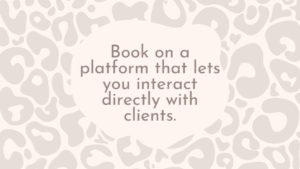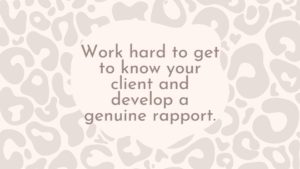The Text
Yesterday morning my husband and I woke up to a text from our daughter Emma. Emma is a sophomore in college a small liberal arts school in central Pennsylvania called Elizabthethtown College. She texted us this photo of gluten free donut holes. She said she urgently needed us to go to Trader Joe’s right away to get them for her. She was concerned that they would sell out immediately. Even though Emma has a car, there is no Trader Joes near her school so she was very much hoping we could help her out with this.
arts school in central Pennsylvania called Elizabthethtown College. She texted us this photo of gluten free donut holes. She said she urgently needed us to go to Trader Joe’s right away to get them for her. She was concerned that they would sell out immediately. Even though Emma has a car, there is no Trader Joes near her school so she was very much hoping we could help her out with this.
Our Mission
Harlan had to travel for work yesterday, so tasked with our highly sensitive and urgent message, as soon as the store opened I went to Trader Joe’s, armed with my iPhone so that if need be I had the photo. First, I did two laps myself, looking in the logical places I thought they would be. No dice, the donut holes were no where to be found.
The Rescue Team
Not wanting to disappoint me super sweet kid, both because she is super sweet and because I am totally Type A and could not  leave without the donut holes, I sought assistance. The first guy was working on oranges. He went to where he thought they’d be. They were not there. He pulled in another gal who then pulled in a third woman from the bakery who then pulled in a fourth woman, a manager. So yes, I had FOUR people helping me look for the donut holes. We worked hard and were thorough. Two of them were positive they had been in the store.
leave without the donut holes, I sought assistance. The first guy was working on oranges. He went to where he thought they’d be. They were not there. He pulled in another gal who then pulled in a third woman from the bakery who then pulled in a fourth woman, a manager. So yes, I had FOUR people helping me look for the donut holes. We worked hard and were thorough. Two of them were positive they had been in the store.
Ultimately, the manager took to the computer. She discovered that the highly coveted donut holes needed to be special ordered. They placed an order and told me to call tomorrow morning and that they would set some aside for us. I felt so valued and was so appreciative of the help. Then, as if that was not enough, they let me take a lollipop even though I had not located the stuffed turtle hidden somewhere in the store. I’m not kidding.
Customer Service Takeaways
If Trader Joe’s was being ranked as a business or a super marked or for what kind of human beings they were, basically on every single lever, they deserve an A plus plus. As voice actors, we can all learn a lot from their behavior and over all mentality so let’s take a moment to dissect what happened at Trader Joes:
- They were a shining example of team work. One person did not need to steal the show. They worked together to accomplish a common goal. In voice over some of us have the opportunity to work as a team. Whether we are demo producers and have partners, or work on a multi-talent cast, or are at a conference and are on a panel with industry friends, sometimes we are fortunate enough to work with others. This is our moment to take a note and lift everyone up. It goes back to the old falcon saying, “the rising tide lifts all the ships in the harbor.” This has always been my experience in VO, and it was for sure my experience at Trader Joe’s. I am quite sure this is why the store is packed as soon as the doors open on a Monday morning, and if you want your voice over business to be booming, this is a great lesson to learn!
- In this incidence, the price tag didn’t matter. I did not go in saying I needed 100 boxes of donut holes. I was not some prized Trader Joe’s client. Yet each member of the team treated me like I was the most important sale of the day. I will confess that this is an area where even I need to do some re-thinking. I do not treat all of my clients the same. I certainly will treat a national spot differently than a $200 one-off gig. Perhaps this needs to be re-thought. It made me feel really good to be helped and values, period.
- At Trader Joe’s the employees bent over backwards to help. I do always try to do this. Whether I have a voice over client, a demo client, or a coaching client, I want their experience working with me to leave them feeling exceedingly happy. In a business like VO where clients have an abundance of choice on all fronts, I am extremely appreciative of their trust in me and in return I ben over backwards to work as hard as I can to do a good job.
- At Trader Joe’s the entire experience, from beginning to end, with the lolly pop, was extra. I try to do this! I am always reachable. I have helped get students on rosters of clients and agents. I have redone their resumes. I audit their auditions. But being extra is typically not something that is asked of you, it’s just something you bring. So my friends, bring it!!
- Most importantly, my recent shopping experience left me, the, client feeling valued. When it comes time to go back… where will I go? That’s right. And that is how we want each and every one of our voice over clients to feel.
We want to do our very best in voice over always. Well often times being and doing our best has nothing to do with our sound and our audio. A lot of the time it has to do with who we are, how we treat others, and the services we provide that go beyond our voice.
Often the voice over is the last piece of the puzzle. Video producers and others who are casting may come to you very close to the deadline and need help to make their project incredible. We have an opportunity to take their time of stress, take them by the hand, and turn it into something wonderful. As someone who also coaches and does demos, it’s the same thing. I can use this as a defining moment in someone career to help make it memorable. My experience in Trader Joe’s can only be described as excellent. I only want to leave my clients feeling this way.
 In general, the platform you are on matters! Some pay-to-plays and even many rosters do not allow you direct interaction with the clients. The client belongs to them, not you. Their goal is for the client to come back to their site, to their platform. You, the paying talent, are only a means to that end. Other pay-to-plays, in contrast, let you interact directly with your client. Do your homework and start booking on those sites. Wouldn’t it be great if the next time the client needed you they just came directly to you, and you did not even need to audition? And wouldn’t it be great if that happened over and over with multiple clients? That’s how you build a business!
In general, the platform you are on matters! Some pay-to-plays and even many rosters do not allow you direct interaction with the clients. The client belongs to them, not you. Their goal is for the client to come back to their site, to their platform. You, the paying talent, are only a means to that end. Other pay-to-plays, in contrast, let you interact directly with your client. Do your homework and start booking on those sites. Wouldn’t it be great if the next time the client needed you they just came directly to you, and you did not even need to audition? And wouldn’t it be great if that happened over and over with multiple clients? That’s how you build a business! So let’s go back to this client that you’ve booked on this pay to play for a commercial that you can interact directly with. Let’s say this job comes in on a Saturday and it’s a “Rush” job. Do you actually have anything else going on? Did you really need to re-shuffle your life to accommodate them? To me, if the client is already paying a nice rate, I would rather dazzle them with my super fast turn-around time and ease of availability than nickel and dime them. After all, how does it make you feel when you are charged extra for every little thing by a service provider? Instead, make it easy for the client to get exactly what they need as soon as they need it. Do an awesome job right away. Do you know what will happen if you do your job well and quickly? The client will be happy.
So let’s go back to this client that you’ve booked on this pay to play for a commercial that you can interact directly with. Let’s say this job comes in on a Saturday and it’s a “Rush” job. Do you actually have anything else going on? Did you really need to re-shuffle your life to accommodate them? To me, if the client is already paying a nice rate, I would rather dazzle them with my super fast turn-around time and ease of availability than nickel and dime them. After all, how does it make you feel when you are charged extra for every little thing by a service provider? Instead, make it easy for the client to get exactly what they need as soon as they need it. Do an awesome job right away. Do you know what will happen if you do your job well and quickly? The client will be happy. In the course of your email discourse, try to start getting to know your client. You can start with the basics: ask them how they are and share a tidbit about your day or your week. If you live in a different region, chats about the weather can actually be riveting. I happen to be a working mom, so I love bringing that into the fold.
In the course of your email discourse, try to start getting to know your client. You can start with the basics: ask them how they are and share a tidbit about your day or your week. If you live in a different region, chats about the weather can actually be riveting. I happen to be a working mom, so I love bringing that into the fold. Every job matters. Clients have a choice when casting and we are lucky to book what we book. An attitude of gratitude goes a long way. At the very least, send a hand-written thank you card. If you have an international client, send a virtual card. Let them know that you appreciate their business and act as if you are part of their team, because you are! Wish them well when presenting the finished audio, and mention your next collaboration. And in thanks. Sometimes, for larger projects, a thank you gift is appropriate. From agents to project managers to video producers to creative directors, it depends who you are working with and what the project was, but I have sent gifts ranging from Starbucks gift cards to chocolate to giant containers of popcorn.
Every job matters. Clients have a choice when casting and we are lucky to book what we book. An attitude of gratitude goes a long way. At the very least, send a hand-written thank you card. If you have an international client, send a virtual card. Let them know that you appreciate their business and act as if you are part of their team, because you are! Wish them well when presenting the finished audio, and mention your next collaboration. And in thanks. Sometimes, for larger projects, a thank you gift is appropriate. From agents to project managers to video producers to creative directors, it depends who you are working with and what the project was, but I have sent gifts ranging from Starbucks gift cards to chocolate to giant containers of popcorn. Make sure to maintain a relationship with your clients! You already know they like you, they already cast you once! So, don’t lose contact. Sometimes newsletters are great for reminding them that you are still available. More personal quarterly check-ins are, however, extremely important. You can share a tid-bit of wrk that might be relevant to them as well. You can check out their social media and new content and engage and comment on it. It’s really important to be genuine and actually have something to say, but it’s also important to simple stay top of mind. Your voice many not be perfect for every project, but you don’t want to miss out on a casting simply because the client has forgotten that you exist. Be present. Engage. Be the talent they are thrilled to hear from.
Make sure to maintain a relationship with your clients! You already know they like you, they already cast you once! So, don’t lose contact. Sometimes newsletters are great for reminding them that you are still available. More personal quarterly check-ins are, however, extremely important. You can share a tid-bit of wrk that might be relevant to them as well. You can check out their social media and new content and engage and comment on it. It’s really important to be genuine and actually have something to say, but it’s also important to simple stay top of mind. Your voice many not be perfect for every project, but you don’t want to miss out on a casting simply because the client has forgotten that you exist. Be present. Engage. Be the talent they are thrilled to hear from. But do I really Need it…
But do I really Need it… When I started my voice over business years ago I had headshots done for my website. While a long time ago people used to say that voice actors did not need to show their face, as the VO industry has continued to evolve and we, as talents, now have to bring in the bulk of our own work, it is on us to run our business like a business. If we want our clients to connect with us, having current pictures is a must. So, about a year back, I was presenting at an online eLearning conference and I was super excited. When they asked for my head shot, I became for cognizant of the fact that the photo no longer resembled me. I was thinner, my hair was shorter, I always wear glasses… the list went on. I decided to take new photos and update them. While my old headshots had been done by a professional, I took the new ones in my booth with an iphone. I loved them and was thrilled.
When I started my voice over business years ago I had headshots done for my website. While a long time ago people used to say that voice actors did not need to show their face, as the VO industry has continued to evolve and we, as talents, now have to bring in the bulk of our own work, it is on us to run our business like a business. If we want our clients to connect with us, having current pictures is a must. So, about a year back, I was presenting at an online eLearning conference and I was super excited. When they asked for my head shot, I became for cognizant of the fact that the photo no longer resembled me. I was thinner, my hair was shorter, I always wear glasses… the list went on. I decided to take new photos and update them. While my old headshots had been done by a professional, I took the new ones in my booth with an iphone. I loved them and was thrilled.


